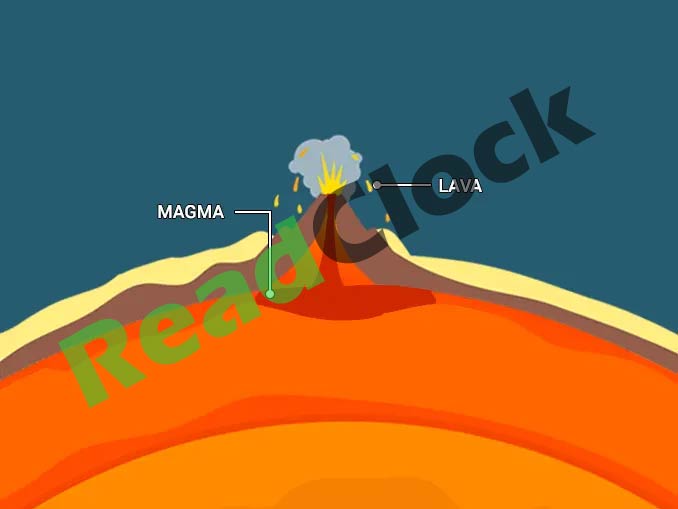what is the difference between magma and lava
Magma and lava are both molten rocks, but they have different characteristics and locations. Here’s a table that highlights the key differences between magma and lava.
| Aspect | Magma | Lava |
|---|---|---|
| Definition | Molten rock located beneath the Earth’s surface. | Molten rock that has erupted onto the Earth’s surface. |
| Location | Found in the Earth’s mantle and crust. | Found on the Earth’s surface, typically during a volcanic eruption. |
| Formation Environment | High-pressure, high-temperature environment beneath the Earth’s surface. | Lower-pressure, lower-temperature environment on the Earth’s surface. |
| Temperature | Typically ranges from 700°C to 1300°C (1300°F to 2400°F). | Typically cools quickly from about 700°C to 1200°C (1300°F to 2200°F). |
| Composition | Contains dissolved gases and crystals. | Loses most of its gases when it erupts and may form a crust as it cools. |
| Behavior | Under high pressure, can form intrusive igneous rocks when it cools slowly. | Flows outward, forming extrusive igneous rocks when it cools rapidly. |
| Types | Based on silica content: basaltic, andesitic, rhyolitic. | Similar to magma types but named differently once erupted: basalt, andesite, rhyolite. |
| Examples | Found in magma chambers beneath volcanoes. | Found in lava flows, lava lakes, and volcanic eruptions. |
| Role in Rock Cycle | Source of igneous rocks formed below the surface (intrusive). | Source of igneous rocks formed on the surface (extrusive). |
Detailed Explanation
Definition
- Magma: Magma is the molten rock stored beneath the Earth’s surface, in the mantle or the crust.
- Lava: Lava is magma that has erupted onto the Earth’s surface through volcanic vents.
Location
- Magma: Located beneath the Earth’s surface, within the mantle or crust.
- Lava: Located on the Earth’s surface after a volcanic eruption.
Formation Environment
- Magma: Forms under high pressure and high temperature within the Earth.
- Lava: Forms when magma reaches the surface and experiences a significant drop in pressure and temperature.
Temperature
- Magma: Generally hotter, with temperatures ranging from 700°C to 1300°C (1300°F to 2400°F).
- Lava: Generally cooler than magma, with temperatures ranging from 700°C to 1200°C (1300°F to 2200°F) as it cools rapidly on the surface.
Composition
- Magma: Contains dissolved gases, crystals, and molten rock.
- Lava: Loses most of its dissolved gases during eruption and can form a solid crust as it cools.
Behavior
- Magma: Can form intrusive igneous rocks like granite when it cools slowly beneath the surface.
- Lava: Flows outward and can form extrusive igneous rocks like basalt when it cools rapidly on the surface.
Types
- Magma: Classified based on its silica content: basaltic (low silica), andesitic (intermediate silica), rhyolitic (high silica).
- Lava: Corresponds to magma types but named differently after eruption: basalt (from basaltic magma), andesite (from andesitic magma), rhyolite (from rhyolitic magma).
Examples
- Magma: Found in magma chambers beneath active volcanoes like those in Hawaii or Iceland.
- Lava: Seen in lava flows from volcanic eruptions, such as those from Mount St. Helens or Kilauea.
Role in Rock Cycle
- Magma: The source of intrusive igneous rocks formed below the surface.
- Lava: The source of extrusive igneous rocks formed on the surface.
Conclusion
While magma and lava are both molten rock, their key differences lie in their location, formation environment, and behavior. Magma is found beneath the Earth’s surface and can form intrusive rocks, while lava is magma that has erupted onto the surface and can form extrusive rocks. Understanding these differences is essential in the study of geology and volcanic activity.

